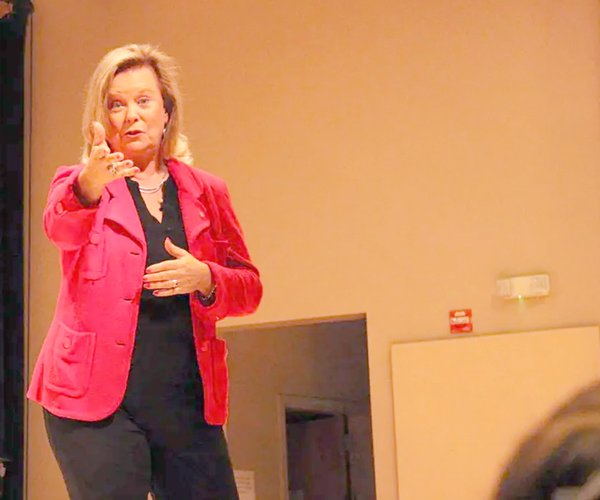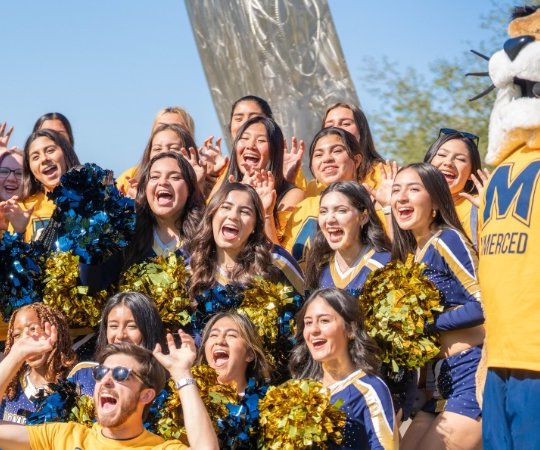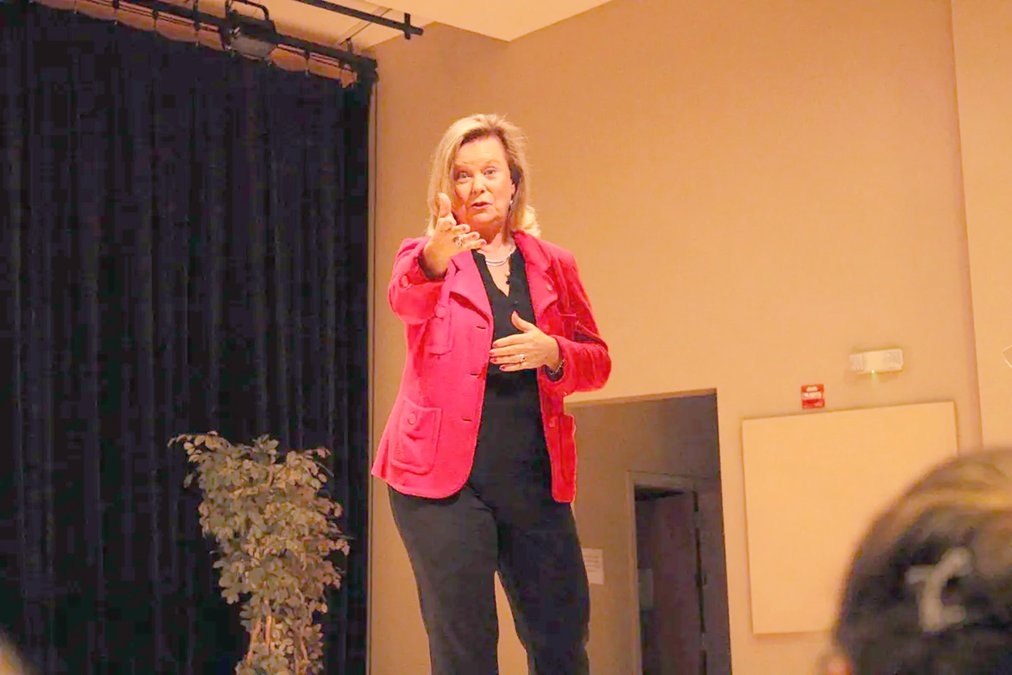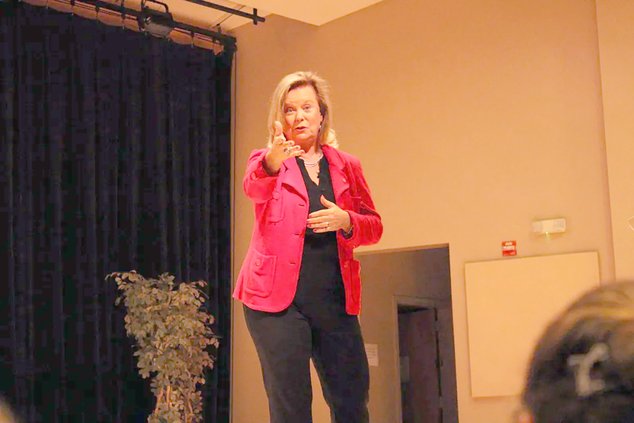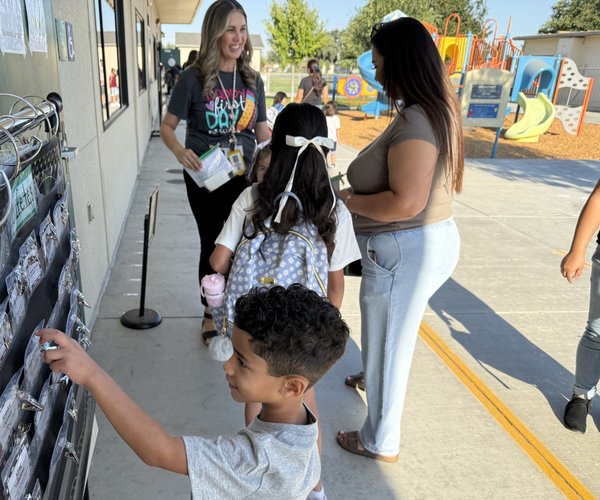BY VIVIENNE AGUILAR
CV Journalism Collaborative
To begin the new academic year, California State University, Stanislaus President Britt Rios-Ellis promoted an open dialogue with the campus community to combat the challenging times the college faces in the aftermath of the pandemic and unforeseen federal funding cuts.
On Tuesday afternoon, members of the president’s cabinet, faculty, community leaders and students filled Snider Recital Hall on Stanislaus State’s Turlock campus for the fall welcome address before the first day of classes Wednesday.
“It’s essential that we use intentional language that reflects our community’s understanding of higher ed and that we evaluate carefully how taxpayers, prospective students, community and industry partners and legislators make sense of what we do,” Rios-Ellis said.
She touched on some current uses of funds for upcoming construction projects including an expansion to the Turlock campus’ signature water reclamation system and residential living spaces. And later this year, the university will open the doors to its modern classrooms on the Stan State Stockton Campus.
She was proud of Stan State’s continued recognition as one of the best public universities in the nation, as ranked by The Princeton Review, Wall Street Journal and others.
Compared to last fall, full-time student enrollment is up 2.4%, and the number of students living on campus up 2.2%.
Bottom of Form
University leadership is “cautiously optimistic” about the growth in overall undergraduate enrollment and expects to see a 5.6% increase from last year. The final count of this semester’s enrollment will be ready in September.
Once this data is available, the school will have a better understanding of its budget, as income is heavily impacted by enrollment.
In the meantime, Rios-Ellis shared that the CSU system, like other government departments following cuts made by the Trump Administration and other financial headwinds, is facing a deferred allocation of $144 million or 3% of its base budget. For Stan State, that impact equates to an additional $3.1 million added to its deficit.
To combat the federal and state budgets tightening around higher education, Rios-Ellis’s leadership team has looked for Central Valley-based partnerships and entrepreneurial opportunities to generate revenue instead. She encouraged the campus community to adopt the value and practice of “cariño” – a Spanish word with no proper English equivalent.
She told the audience “cariño” “represents one of the highest forms of emotional intelligence and is truly a reflection of love and justice in action” and hopes faculty and staff adopt the mindset while working with students and colleagues.
The value is important at Stanislaus State, she said, because it reflects the attitudes of the people who study, work and partner with the Hispanic-Serving Institution.
A HSI is determined by a full-time student population of at least 25% and is eligible for specific grants through the U.S. Department of Education.
She then told the crowd that her leadership team is working towards building the same level of culturally-based support for students and faculty who identify with Asian, Pacific Islander and Native communities.
Rios-Ellis announced that campus leaders across various departments are working to fulfil this goal with the help of a $1.2 million grant awarded to Stan State by the CSU system.
“We will keep the ever more elusive American dream or ‘sueño Americano’ alive and well at Stan State,” Rios-Ellis said in her closing remarks.
Faculty, students questions use of AI, funding challenges
Rios-Ellis’ presentation also included a congratulations to four Stan State professors who have embarked on the AI Educational Innovations Challenge for their projects aimed at providing ethical, effective and scalable integration of artificial intelligence for students and educators across the CSU system.
The projects, ranging from uses of AI in theater to teacher preparation courses, will be completed in June 2026.
Not everyone was excited about this. Noble Everett, a music technology major in their final semester, voiced concerns about the technology’s biases and wanted to know if they could opt out of using it for school work.
“When I say opt out, I mean I want to guarantee that the things I’m learning are only things verified by people, taught to me by people, and worked on using non-AI tools,” Everett wrote in a message to The Modesto Focus.
“I do not want AI anywhere in the chain of knowledge currently being passed down to me, because its presence would nearly completely destroy my confidence in the accuracy of the things I’m learning, and make me feel like I’m paying tuition for lies I could be told at home,” they said.
Rios-Ellis maintained that AI use will be necessary for students like Everett to gain employment, as it has become an expectation across all fields.
Geography Professor and researcher Jose Diaz-Garayua was troubled by a lack of information on how federal grants and payments for students hoping to work full-time during summer in his HEX Lab are being organized.
The president acknowledged federal grants pulled during the beginning of the year and a lack of proper organization for deadlines complicates opportunities for students, but promised to provide faculty in this position more support in one year’s time.
“I’ve worked here for 10 years and before, I didn’t feel comfortable asking questions like this. But President Rios-Ellis and her team are very approachable,” Diaz-Garayua said despite the challenges the event left him optimistic. “This year I feel hopeful and it looks like the stars are starting to align.”
— Vivienne Aguilar is a reporter for The Modesto Focus, a project of the Central Valley Journalism Collaborative. Contact Aguilar at vivienne@cvlocaljournalism.org.


